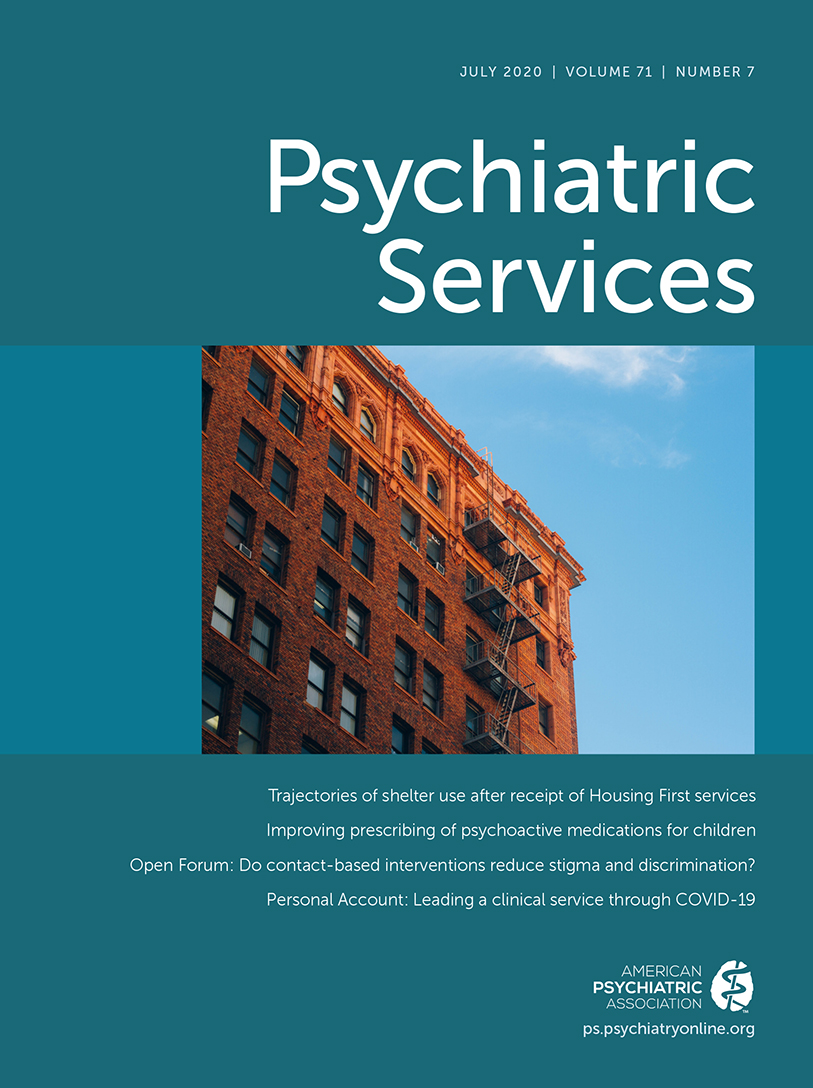Investing in Community Health Centers to Expand Addiction Treatment
For the past three decades of the 20th century, the Veterans Health Administration was the only national public-sector provider that integrated addiction treatment into mainstream health care. But as Jones and colleagues (1) illuminate in this issue of Psychiatric Services, federally supported community health centers (CHCs) have arrived as major public-sector providers of integrated care for patients with substance use disorders.
Indicative of bipartisan support during both the George W. Bush and Barack Obama administrations, CHCs have roughly tripled their population coverage since 2000. CHCs are now a critical safety-net provider, serving about one of every 12 Americans annually. Substance use disorders are prevalent in the CHC patient population; thus, there is ample opportunity to treat addiction while patients are receiving other health care.
For these reasons, CHCs were central to the Obama administration’s efforts to expand addiction treatment and integrate it into mainstream medical care. The Health Resources and Services Administration and the Substance Abuse and Mental Health Services Administration directed new resources to CHCs to train staff and hire additional counselors to provide addiction screening and treatment. The Affordable Care Act also indirectly expanded substance use disorder treatment in CHCs by dramatically increasing health insurance coverage through the expansion of Medicaid eligibility (many CHC patients are enrolled in Medicaid), the extension of parity requirements established by the Mental Health Parity and Addiction Equity Act to more health insurance plans, and the designation of substance use disorder treatment as an essential health care benefit.
Jones and colleagues’ study provides new evidence that this federal investment in CHCs has been successful. That mainstreamed funds made a major impact should reassure those who believe that federal funds not “fenced off” within the federal Substance Abuse Prevention and Treatment block grant are invariably being diverted to other health care priorities. CHCs that received federal funds have greatly expanded access to medications for treatment of alcohol and opioid use disorders—critical national priorities given the nation’s opioid epidemic and high alcohol-related mortality. Although many specialty addiction treatment programs lack medically trained professionals who have prescription privileges, CHCs already consistently employ health professionals who can prescribe medications for addiction as well as its common comorbidities. CHCs are well positioned to leverage existing staffing and infrastructure to expand addiction treatment quickly and cost effectively.
The study findings also highlight the value of coordinating funding streams to promote the integration of addiction treatment into primary care settings. CHCs need start-up capital to build the infrastructure necessary to provide addiction treatment; they also need access to steady revenue streams to enable them to maintain these efforts over time. Medicaid has an important role to play in promoting treatment integration. As the largest source of insurance revenue among CHCs, Medicaid coverage is critical to ensure that centers can sustain provision of addiction treatment over the long term.
Medicaid payment policies need to become better aligned with efforts to promote integrated care. For example, CHCs’ capacity to provide substance use disorder treatment is hampered by outdated provider eligibility criteria that require licensure as a behavioral health facility in order to receive reimbursement for addiction treatment. Medicaid managed care plans that exclude CHCs from their provider networks may create similar challenges. Removing barriers to Medicaid reimbursement could accelerate CHC provision of addiction treatment.
The arrival of CHCs as a major public-sector provider of addiction treatment is already benefiting public health. And they have potential to do much more. As the nation continues to grapple with a deadly epidemic of opioid-related morbidity and mortality, as well as many other prevalent addictions, CHCs are well positioned to help the most vulnerable segment of society. Sustained attention and advocacy to build on these gains should be a major priority for health policy makers, particularly those in the addiction field.
1 : Addiction treatment capacity in health centers: the role of Medicaid reimbursement and targeted grant funding. Psychiatr Serv 2020; 71:684–690Link, Google Scholar



